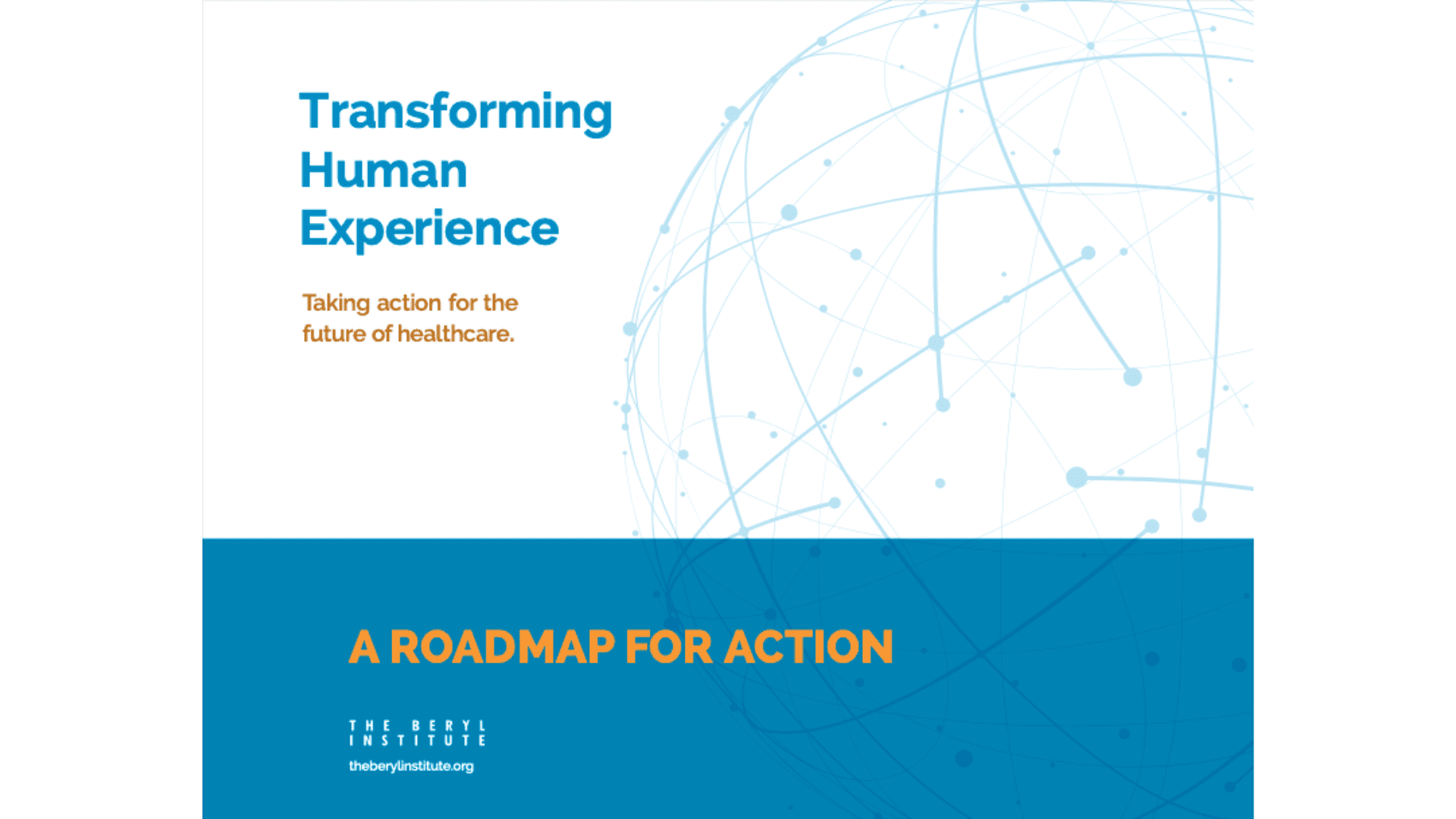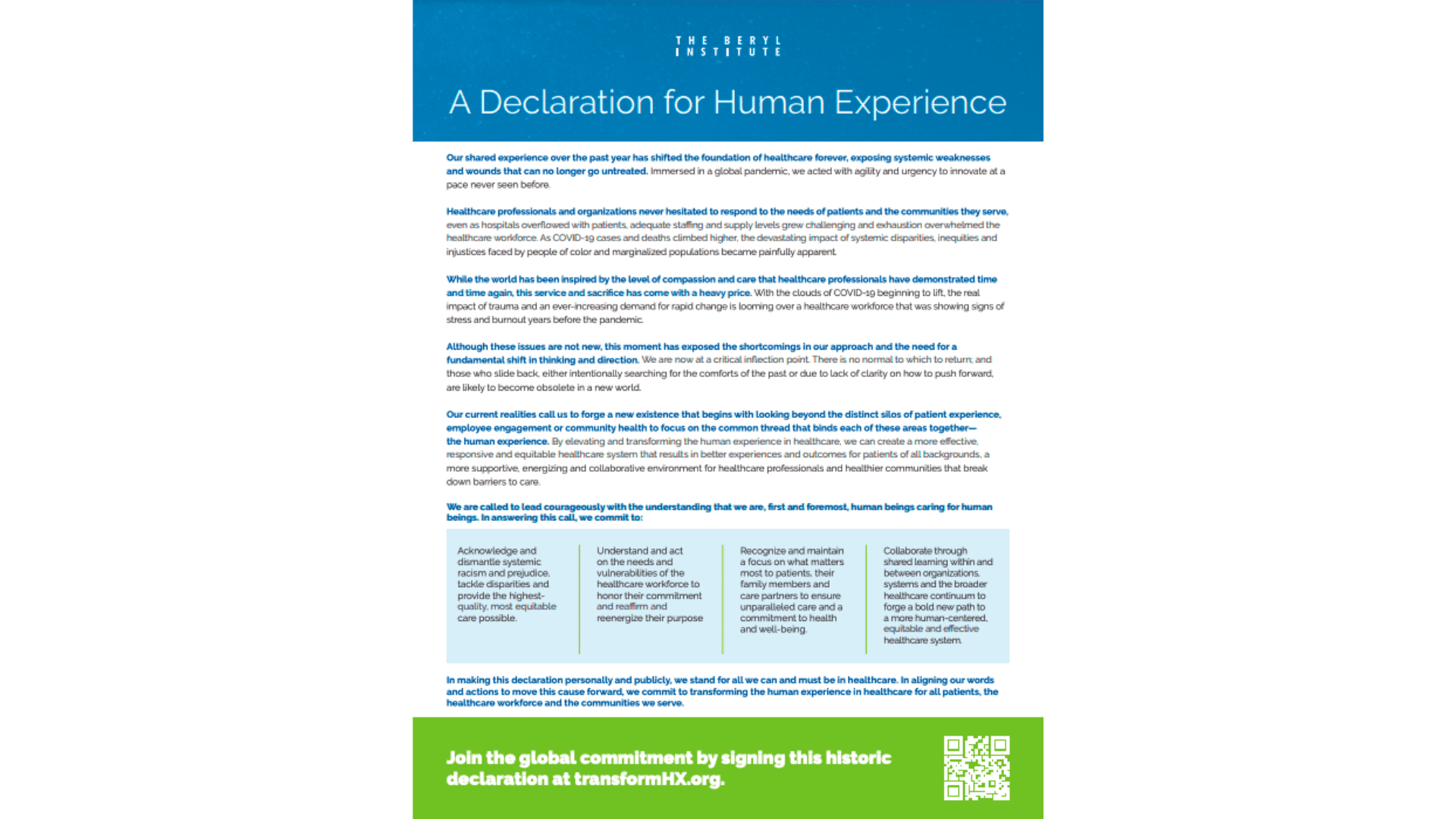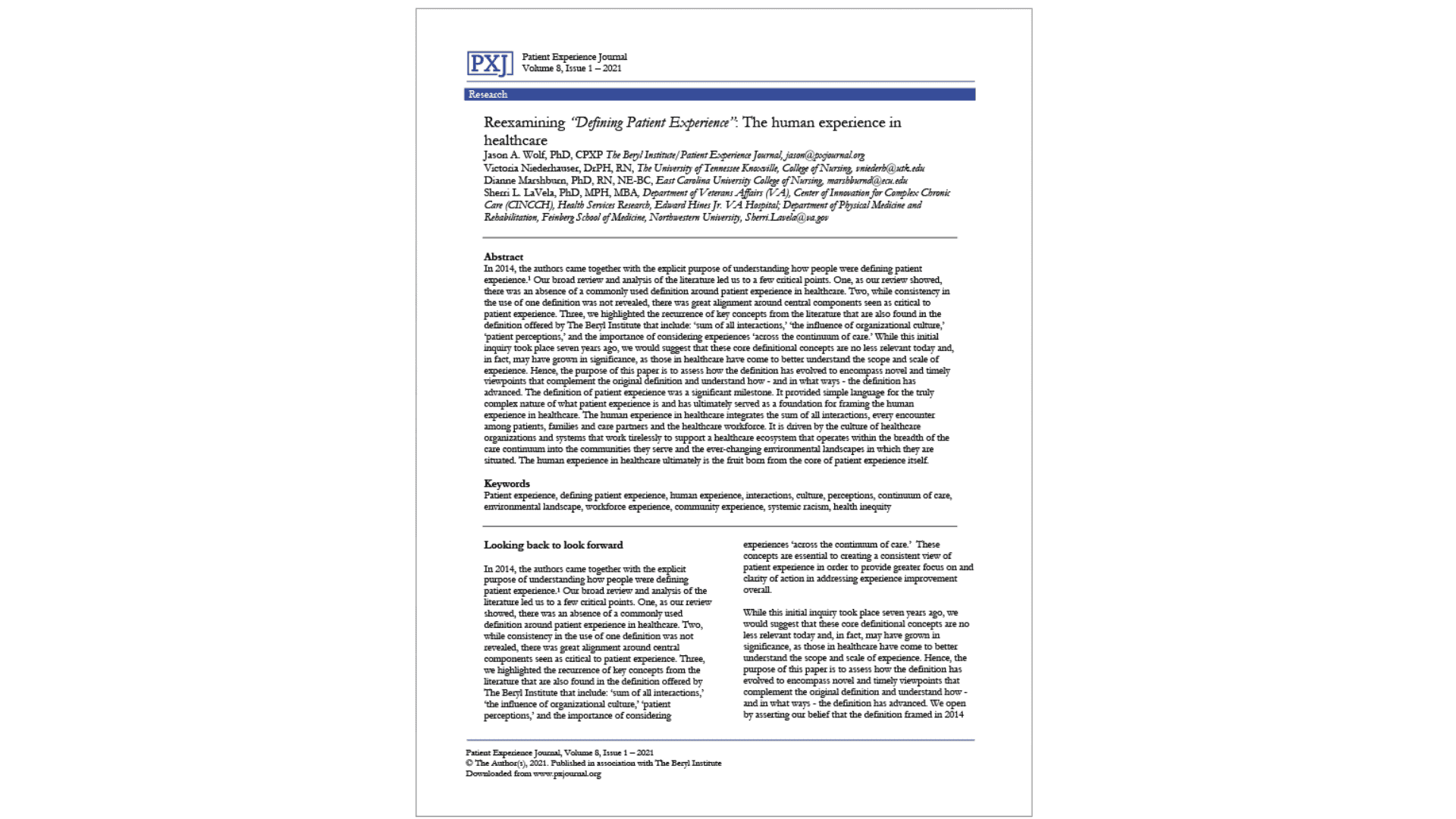Roadmap For Action
Get started on your journey towards Transform HX
Transform HX offers eleven key aims and associated actions focused on leading to a new future for healthcare. Organizations will use the framework to identify key actions in elevating experience strategy and ultimately transforming the human experience in healthcare. Thank you to the members of the steering team for their contributions to this effort.




Redefine and advance the integrated nature of and critical role patients and their circle of support play on care teams.
Reimagine, redefine and reshape the essential role of leadership in driving systematic change.
Co-design systems, processes and behaviors to deliver the best human experience.
Advocate for equitable institutional, governmental and payor policies, incentives and funding to drive positive change.